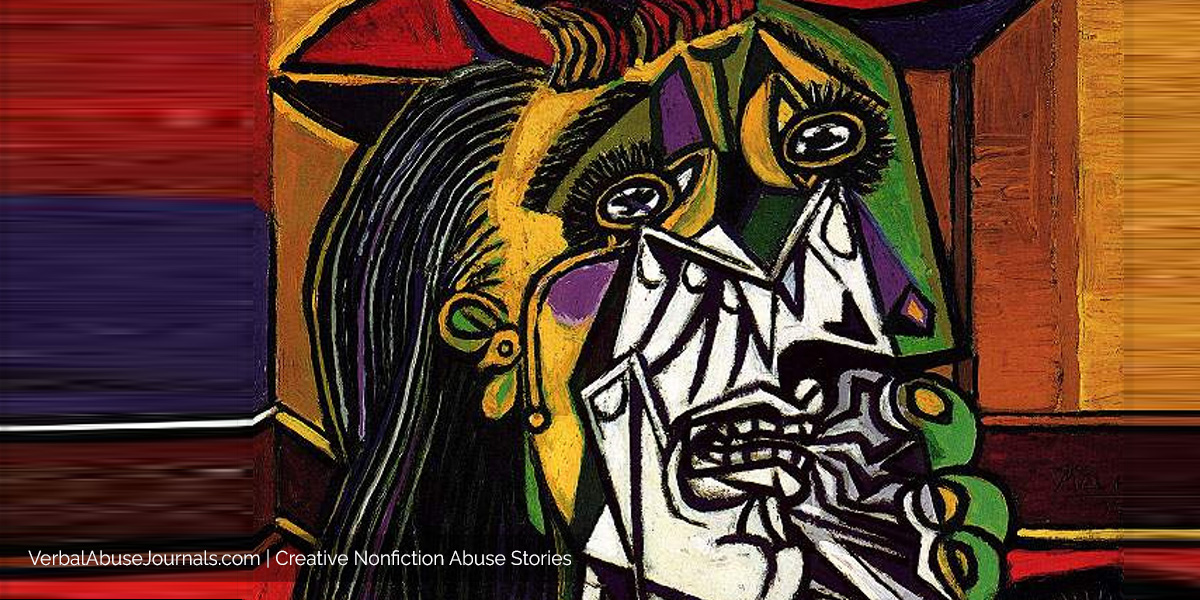Creative Storytelling Helps Abuse Victims Heal
Here are some stories for you:
- Bouncy Ball
- Daybreak – Short Story of Leaving My Abuser
- Knot Spinning
- Pride and Greed
- PTSD Makes a Noisy Mind
- Declaration of Freedom From Abuse
- The Haunted House – How to Explain Verbal Abuse
- Of Knights and Poets
Past and present victims of domestic violence generally embody great senses of creativity, empathy, and the ability to love unconditionally. These traits, when cherished and admired by a healthy partner, help to create storybook love and life-long commitments. However, an abusive person will corrupt their victim’s creativity, empathy, and love, twisting giving attitudes into unfathomable self-destruction.
Most survivors of domestic violence report a “loss of self” during and after the abusive relationship. We feel as if we’ve lost a part of ourselves, giving it over to our abuser as ransom in exchange for our lives. We feel like the “I” in us is destroyed. I used my creativity to find ways to stay with him, to solve “our” problem through feeling for his pain and believing my love would show him the way. I used my most divine qualities to confine myself in abuse. My truth got lost in a lie.
One day, several months after leaving him, it dawned on me that truth is always truth; truth remains when all hope leaves us. I, as a person unique in this world, am truth. I cannot be destroyed. My abuser could not destroy me. My abuser could not take my truth – it is the essence of me.
So, in light of that realization, I began to think about all of the crap he smothered me with guilt, fear, self-questioning, … all the way to self-abuse. I am still me, I am still here – but sometimes I didn’t feel that way because I drowned in the sea of all he told me I was and was not.
What Is a Creative Version of an Abusive Experience?
Healing from abuse sometimes requires revisiting it. Unraveling my truth from the lies brings up memories I didn’t know I retained. Remembering shocks me – the horrors I repressed, the lies I accepted, … sometimes it is too much to process in the first person. Sometimes I must remind myself that the events that created those memories are not happening now.
Detaching myself from the memory, as if a friend were telling the story instead of me, helps me to see more clearly the truth of it all. Writing out the memory as creative nonfiction, allowing the ideas to flow as they will to round up fleeting feelings, helps me to heal the painful memories and create a new story that suits itself better.
Creative Nonfiction is a type of literature that tells a story while leaving some wiggle room that nonfiction does not allow. For example, this story titled Daybreak severely abbreviates the story of the night I left my husband. The part about the line on my forehead is not embellished, but the subject of the knife serves to tell this story without being entirely factual. The story is true but pulled from different experiences. With creative nonfiction, the gist of the story is true, but the details are not required to be in order or exactly as an event unfolded.
If you want to tell your story of abuse in this way, it can be a very cathartic, healing experience.
Featured image by Pablo Picasso; I butchered stretched out the sides to make it fit the screen how I wanted.
Similar Pages
- Abuse Quotes from Survivors
- Creative Nonfiction Abuse Stories
- Domestic Abuse Art
- Stories of Abuse in Video, Music, & Audio
- Stories of Leaving Abuse
- Stories of Living with Abuse

